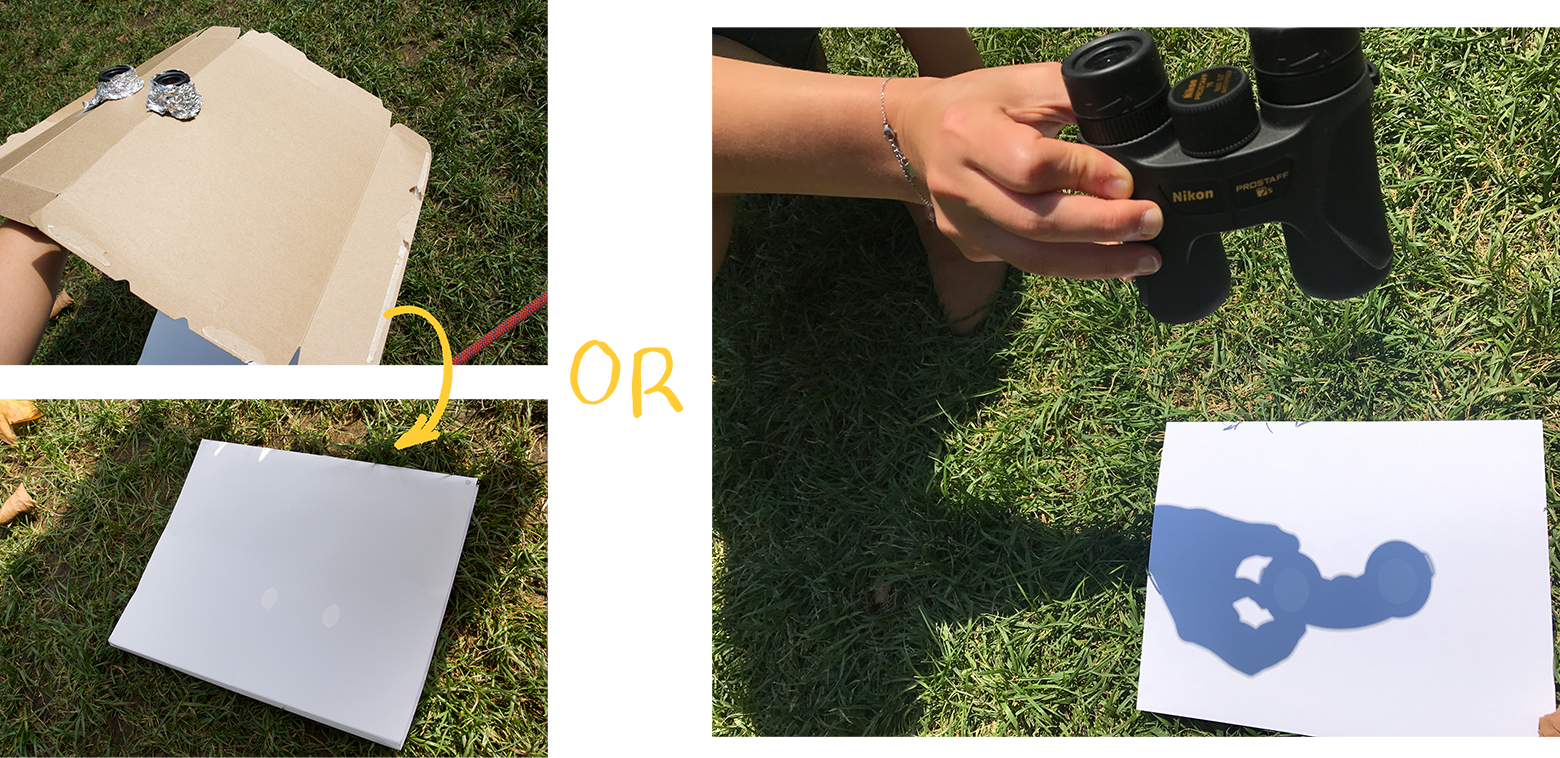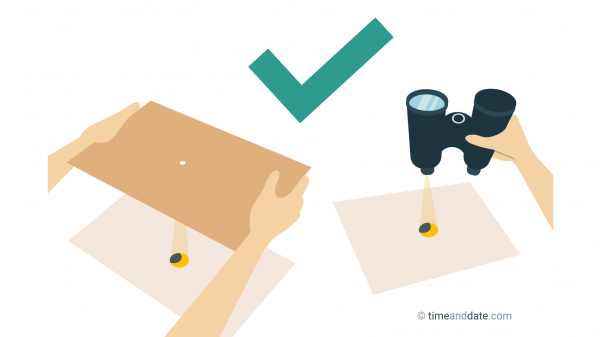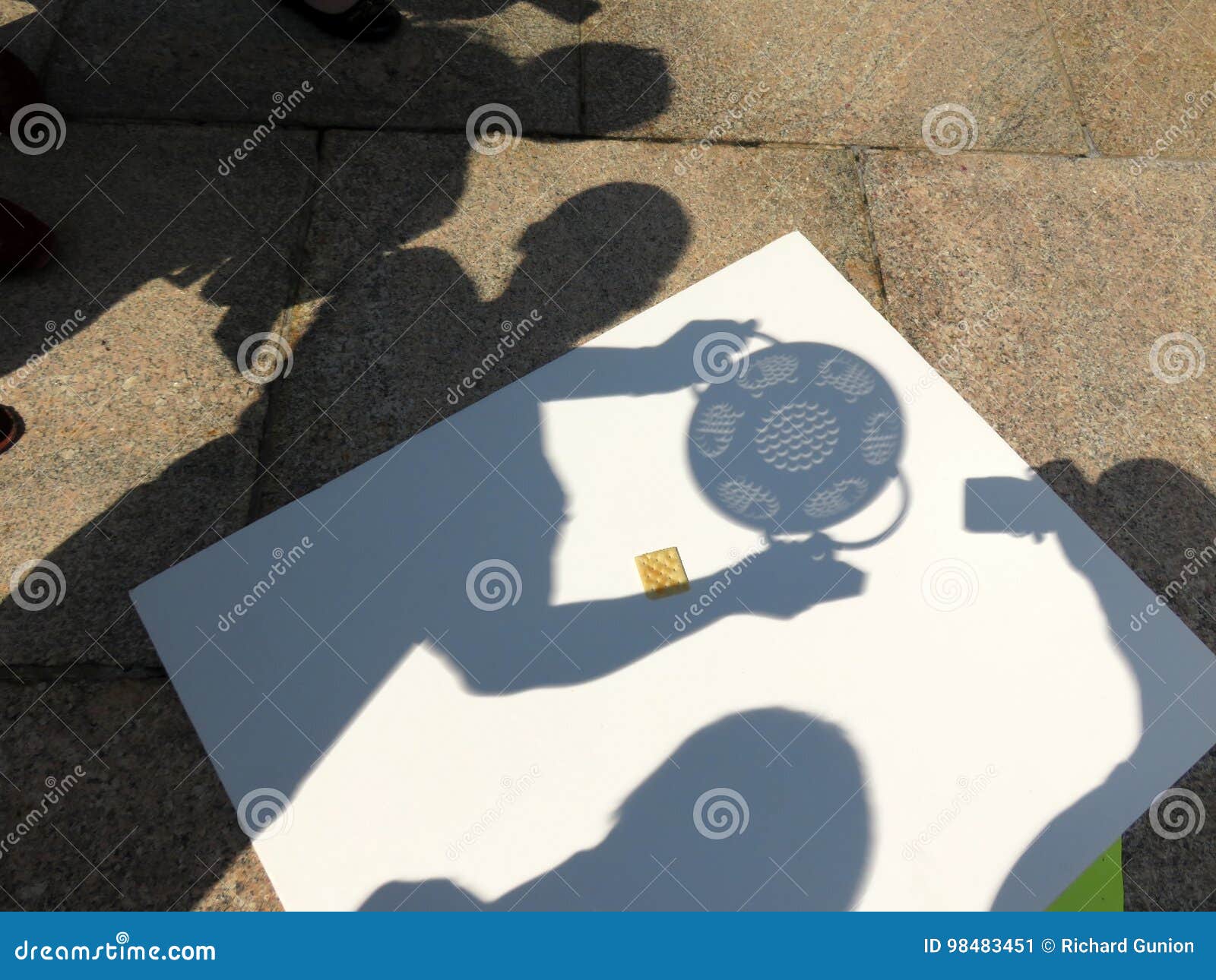

Cover the bottom of the tube with white paper to make your projection platform.At the other end of the tube, cut a rectangle out of the side of your tube that allows you to see the bottom of the tube.Cut a 1-inch square out of one end of the tube and cover it with aluminum foil.For a longer viewer (and larger projection), you may want to tape two mailing tubes end-to-end with dark duct tape.To create this viewer you need an old mailing tube, aluminum foil, box cutters (have an adult use this tool), and white paper.

You can actually calculate the size that your projection will appear using the dimensions of your projector. Why make a longer pinhole viewer you ask? It creates a larger projection of the sun. If you have any old shipping tubes, you can create a longer pinhole viewer. You’re now ready for the day of the eclipse! If you need to, use additional dark tape to block any places where light is leaking into the box. Put on your pinhole hat so that the aluminum panel faces the sun and tilt and turn until a small circular dot is projected onto the white paper inside. On a sunny day, stand outside with your back to the sun.Cover the inside of the front side of your box with white paper to make a viewing screen.Secure the foil with dark tape and poke a hole in the center of it with a pin. On the side labeled “back” cut a square hole in the corner towards the top, away from where you’ve cut a hole for your head.It helps to place the hole as close as you can to a corner. Create a hole for your head in the bottom the box towards the back (have an adult do this part). Identify the two sides of the box that are the farthest apart, and label one side “front” and the other side “back”.Tape one side closed with dark masking or duct tape. To create one, you need a large box, some white paper, duct tape, and some aluminum foil. You can create a pinhole viewer that goes over your head. SAFETY NOTE: You should never look directly at the sun without the special type of solar filter found in eclipse glasses. During a partial solar eclipse, projections of the sun’s rays will appear in a crescent shape that changes with the position of the moon! Pinhole projectors are very cool, very old devices that date back thousands of years. Projection devices work by focusing the sun’s light onto another surface so that you can safely view the sun indirectly. The 2017 solar eclipse is approaching – but what if you don’t have eclipse glasses? No worries, you can appreciate this solar phenomenon using some simple projection devices you can make at home. Go outside and hold your pinhole perpendicular to the sun.On August 21, 2017, between 9 am PST and 3 pm EST ( check your timing here) everyone in North America will be able to see a partial solar eclipse! People in 12 states will be in the path of totality and will have the chance to see a total solar eclipse and observe the Sun’s corona! (If you couldn’t already tell, we are pretty excited!!) Photo by Xochitl Garcia. A smaller hole emits less light but creates a sharper image. This part is important, because you don't want to make too big a hole. Tape a piece of aluminum foil over the hole and poke a tiny hole it in. And don't worry about making it perfectly round or totally square. Just get a large piece of cardboard and cut a hole in it. There are two ways you can use a pinhole to view the eclipse. However, we still call these things "cameras," which means "room."īack to the eclipse.

Of course much later this room would be replaced by a box with a lens instead of a pinhole and film instead of an artist. It would then be possible to paint over that image. More than 500 years ago you could get inside a dark room with a pinhole in it that would have an image projected onto a wall. In fact, the word "camera" comes from " camera obscura", which literally means "dark room".

You could fix this by making sure the pinhole image is formed in a very dark room-which is exactly the way it used to be accomplished. However, these images are really quite dim since the object isn't super bright. Really, any object (like a banana) would form an image on the other side of the pinhole. But the pinhole can be used to view things other than a very bright sun. Light isn't a problem with an eclipse, of course, which makes a pinhole the perfect way to observe one.


 0 kommentar(er)
0 kommentar(er)
